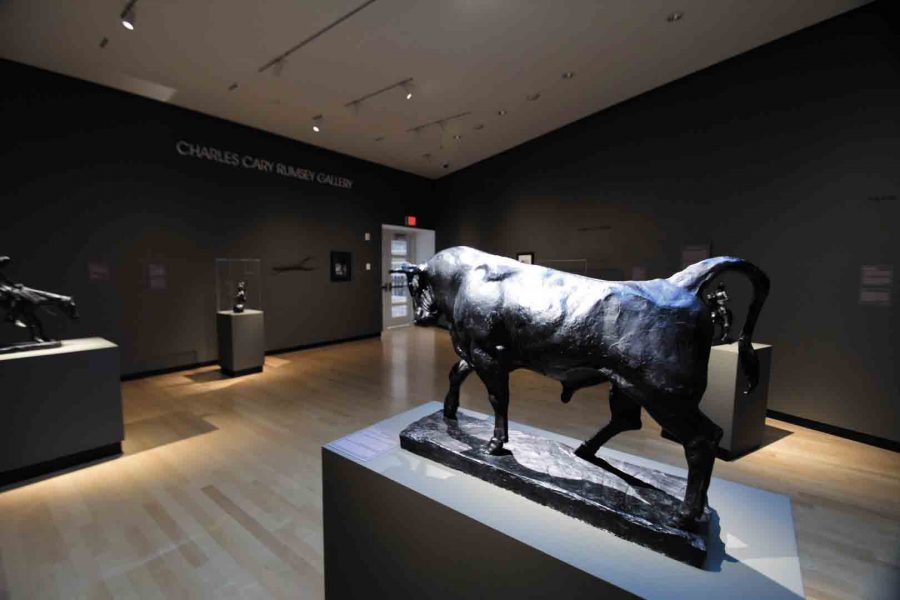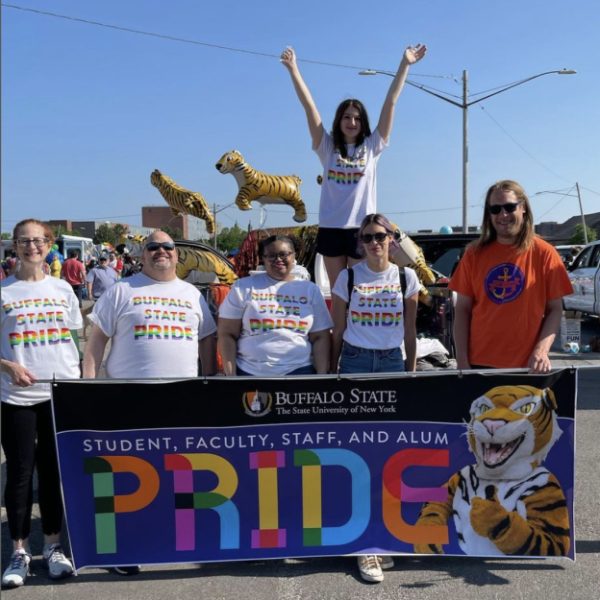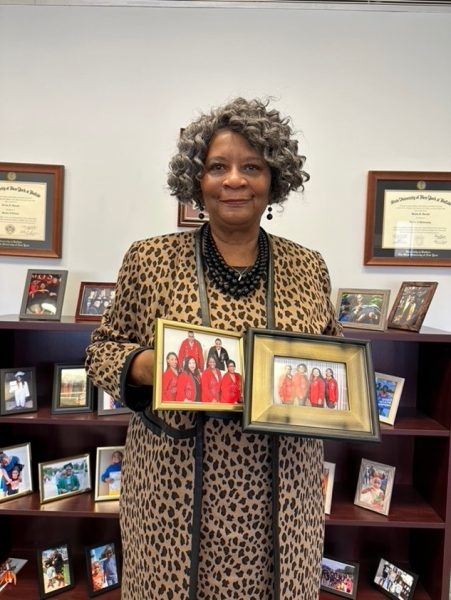Experience the Gatsby era without reading Fitzgerald’s novel
Some of Rumsey’s work on display in the Charles Carey Rumsey Gallery in the Burchfield Penney. You can see Rumsey’s collections of sculptures and other works until June 25.
November 9, 2016
The Burchfield Penney Art Center is displaying “Charles Carey Rumsey: Success in the Gatsby Era” in the Charles Carey Rumsey Gallery until June 25. Admission is $5-10, and general admission is free to SUNY Buffalo State students, faculty, staff and Burchfield Penney members.
The Charles Carey Rumsey Gallery is named for sculptor Charles Carey Rumsey, who had the names of two well-known Buffalo families. Rumsey’s relatives gained their wealth from tanning and railroad businesses, and some became sculptors.
The Carey family included George Carey, an architect who designed the New York State pavilion for the Pan-American Exposition of 1901 and painters Evelyn Rumsey Carey, his aunt, and Evelyn Rumsey Lord, his sister. Trained in the Beaux-Arts tradition in Paris and Boston, Rumsey worked in stone and bronze and secured several public commissions including the frieze on the Manhattan Bridge in New York City. He was developing an Art Deco approach before his tragic death in an automobile accident in 1922 at the age of 43.
Rumsey graduated from Harvard University and studied art at the Boston Art School before going to Paris, France, in 1902 to study at the Ecole des Beaux-Arts. When Rumsey returned from Paris in 1906, he created an art studio in New York City. He soon thereafter began sculptures for several architects such as John Marven Carrere and Thomas Hastings.
Rumsey married Mary Harriman in 1910. They lived in Brookville, New York on Long Island, where they raised three children.
Among Rumsey’s other works, he did a statue of Francisco Pizarro in Trujillo, Spain, the Brownsville War Memorial in Brownsville, Brooklyn, a copy of the “Three Graces Fountain” from Arden House installed in Mirror Lake at Forest Lawn Cemetery, and the controversial figure of a nude woman called “The Pagan.” His most celebrated work is the 1916 frieze, a broad horizontal band of sculpted or painted decoration, on Carrere and Hastings Manhattan Bridge in New York City, called “Buffalo Hunt.”
Rumsey served in World War I along with his brother, Laurence Dana Rumsey Jr, who was a pilot in the war.
At the Burchfield Penney Art Center, the exhibition includes a selection of his sculptures, archival objects, vintage photographs, his World War I military coat and helmet, and sculptor’s calipers inscribed with his name. Artifacts include items donated in recent years that have not been shown in public before.
“I think it’s really interesting how the exhibition shows some of Rumsey’s life that wasn’t artistic such as his World War I uniform,” said Buffalo State junior art major Tom Balbierz. “I think it gives people a little more information on what kind of person he was, and what might’ve inspired him.” Balbierz continued:
“Most exhibitions that show a specific artists’ art should show some of the things that were just a part of their normal life so that we can try understand what inspired them.”
Head of Collections and the Charles Cary Rumsey Curator, Nancy Weekly, organized the exhibition with assistance from Senior Preparator Patrick Robideau, Archivist Heather Gring, Registrar Robert Cutrona, Preparator Tom Holt, Curator Tullis Johnson, Facilities Manager Bill Menshon, SUNY Buffalo State’s museum studies students taking Nancy Weekly’s Curatorship class, interns, and Dr. Arlesa Shephard, assistant professor of Fashion & Textile Technology at Buffalo State.
For more information on the Charles Cary Rumsey Gallery, visit burchfieldpenney.org
email: [email protected]














